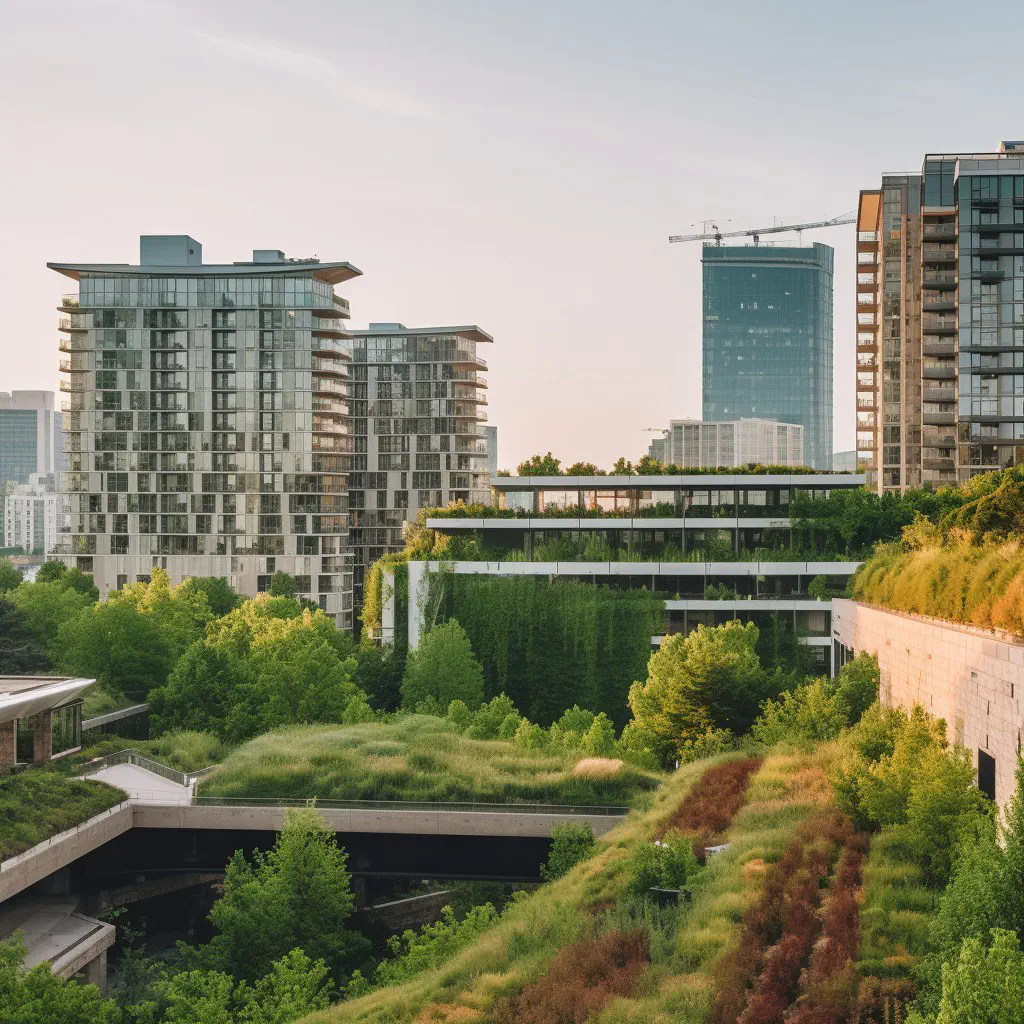
Introduction
In the year 2050, the world will be a vastly different place than it is today. With the rapid advancement of technology and the ongoing effects of climate change, our planet is evolving at an unprecedented pace. To prepare for this future, it’s essential that we understand what to expect and plan accordingly. This article will explore the key trends and changes that we can anticipate in the coming decades.
It’s important to note that these changes aren’t random nor will they just happen. We can and must work towards creating the future we want to see. By taking a proactive approach, we can shape the world of tomorrow into a more sustainable, innovative and equitable place for everyone.
Futuristic Cities
As we move towards 2050, cities around the world will continue to evolve into smart cities that incorporate advanced technology to enhance the quality of life for its residents. The integration of smart technologies such as Internet of Things (IoT) devices, smart sensors, and AI-powered systems will allow for real-time monitoring, analysis, and optimization of various city functions.
One of the most notable changes in futuristic cities will be the transformation of transportation systems. A shift towards shared, electric, and autonomous vehicles will significantly reduce traffic congestion and emissions. The widespread adoption of electric vehicles will necessitate the development of robust charging infrastructure to support their use.
Due to the increased reliance on technology, city planners and developers must ensure that the necessary infrastructure is in place to support the seamless integration of these technologies. This includes high-speed internet connectivity and 5G networks, which will enable data transfer at unprecedented speeds.
Smart Buildings
In addition to transportation, futuristic cities will see significant transformations in the way buildings are designed and constructed. Buildings will need to be energy-efficient, sustainable, and equipped with smart technology to ensure maximum functionality and comfort for occupants. Smart buildings will use sensors and advanced analytics to optimize energy usage, indoor air quality, and lighting conditions.
Challenges to Overcome
One of the main challenges that we face in building futuristic cities is access to advanced technology. Many emerging cities lack the financial resources and technical expertise to implement a smart city infrastructure. Governments, organizations, and private companies must work together to provide the necessary resources and funding to enable these cities to catch up.
Another significant barrier to achieving futuristic cities is societal resistance to change. Many people are often skeptical about the benefits of a smart city infrastructure, and may not be willing to make the necessary investments to support this initiative. City planners and developers must work to educate residents and promote the benefits of a smart city infrastructure in order to gain support for these projects.
Conclusion
Overall, the future of cities in 2050 looks promising, with the promise of smart technology and sustainability being at the forefront of this transformation. However, it will undoubtedly require a coordinated effort of collaboration, innovation, and investment from various stakeholders to ensure that our urban centers are equipped to handle the challenges of the future. With the right investments and strategies, we can ensure that our cities lead the way towards a sustainable and prosperous future.
Advanced Technology
The technological innovations that will occur by 2050 are sure to be transformative. Three major areas of technological advancement that will significantly shape the future are Artificial Intelligence and Machine Learning, Robotics and Automation, and Augmented and Virtual Reality.
Artificial Intelligence and Machine Learning
Artificial Intelligence (AI) and Machine Learning (ML) will have a profound impact on our daily lives. By 2050, AI will be ubiquitous, integrated into nearly every aspect of our lives, from healthcare to finance to education. Machine Learning algorithms will enable AI to learn, improve and adapt continuously and autonomously. AI systems will become more creative and innovative, surpassing human capabilities in problem-solving, decision making, and data analysis.
Robotics and Automation
Robots and automation will transform manufacturing, logistics, agriculture, and healthcare by reducing costs, improving efficiency, and lowering the risk of errors. Robots will become more intelligent, versatile, and capable of performing a wide range of tasks on their own, such as assembling complex products, performing surgery, and driving autonomous vehicles.
Augmented and Virtual Reality
Augmented and Virtual Reality (AR/VR) will revolutionize entertainment, gaming, education, and communication. AR devices will enhance our perception of reality, overlaying digital information onto the physical world, while VR systems will create immersive, lifelike experiences that transport us to different places and times. AR/VR technology will have significant implications for training, education, and collaboration, enabling people to learn, work, and socialize remotely from anywhere.
The advancements in AI, Robotics, and AR/VR have the potential to significantly change the way we live, work, and interact with the world around us. However, there are challenges that must be overcome for the full potential of these technologies to be realized. These challenges include accessibility to advanced technology, funding and resources, and societal resistance to change. Governments, businesses, and individuals must prioritize investment in technological innovation while addressing these challenges to ensure a better future for all.
Sustainability and Renewable Resources
Sustainability and the use of renewable resources will be a critical aspect of life in 2050. As the world population continues to grow, the demand for resources is also increasing. Fossil fuels, often used to power various technologies, are finite, and their use leads to negative environmental impacts.
A Shift Towards Renewable Energy Sources
The shift towards renewable energy sources will play a significant role in ensuring a sustainable future. Solar, wind, and hydropower will continue to gain prominence as energy sources. The development of more efficient and cost-effective storage technologies will make it possible to store excess energy generated from renewable sources, ensuring continuous power supply.
Green Infrastructure
Green infrastructure, which refers to the incorporation of nature-based solutions in urban design, will also contribute to sustainability in 2050. Green infrastructure could help reduce the urban heat island effect, mitigate floods, improve air quality, and provide additional ecosystem services.
Use of Sustainable Materials
The use of sustainable materials, like bamboo, recycled plastic, and eco-friendly fabrics, will become increasingly popular in 2050. Agricultural waste could be used to make bioplastics, reducing waste while providing a sustainable source of raw materials. The growth of sustainable agriculture practices could lead to an increase in sustainable materials available, for the construction industry, fashion industry and consumer packaged goods.
Developing and implementing solutions that prioritize sustainability and renewable resources in 2050 will require input and contributions from many sectors. Governments, organizations, and individuals must work together to create a sustainable future that is less dependent on non-renewable resources.
“Sustainability is no longer an option, but a necessity to ensure a livable planet for future generations.”
Challenges to Overcome
There are several challenges that need to be overcome in order to create a better future for all. These challenges include:
Accessibility to Advanced Technology
While technology is advancing at a rapid pace, not everyone has access to the latest innovations. As we move towards a more technologically advanced future, it is important that we bridge the digital divide and ensure that everyone has access to the tools they need to thrive. This includes access to high-speed internet, as well as affordable devices and software.
Funding and Resources
In order to create a sustainable future, significant investments will need to be made in research, development, and infrastructure. This will require funding and resources from governments, organizations, and individuals alike. It is important that we prioritize sustainability and innovation in our spending decisions in order to create a better future for all.
Overcoming Societal Resistance to Change
Change can be difficult, and many people may be resistant to adopting new technologies or embracing a more sustainable way of life. It is important that we work together to educate people about the benefits of innovation and sustainability, and to address any concerns or questions they may have. This will require a collaborative effort from individuals, governments, and organizations to create a shared vision for the future that everyone can support.
In conclusion, while there are certainly challenges that lie ahead, it is important that we remain optimistic and continue to work towards a better future. By prioritizing innovation, sustainability, and collaboration, we can create a world in which everyone has access to the tools they need to succeed and thrive.
Conclusion
In this article, we have explored what the year 2050 could look like in terms of futuristic cities, advanced technology, and sustainability. We have seen how cities will evolve into smart cities, incorporating advanced technology and changing transportation systems. We have also discussed artificial intelligence, machine learning, robotics, automation, and augmented and virtual reality as some of the advanced technologies that will shape the future.
Furthermore, we have noted the importance of having a shift towards renewable energy sources, green infrastructure, and sustainable materials to achieve a sustainable future. Despite these advancements, challenges will arise, especially in accessibility to advanced technology, funding, and resources, and overcoming societal resistance to change.
In conclusion, we must prioritize innovation and sustainability to prepare for the future. This requires individuals, governments, and organizations to work together towards a better future. By embracing these changes and working together to overcome challenges, we can build a brighter future for generations to come. As William Gibson once said, “The future is already here, it’s just not evenly distributed.” Let us work to distribute this future evenly and ensure that everyone benefits from it.

